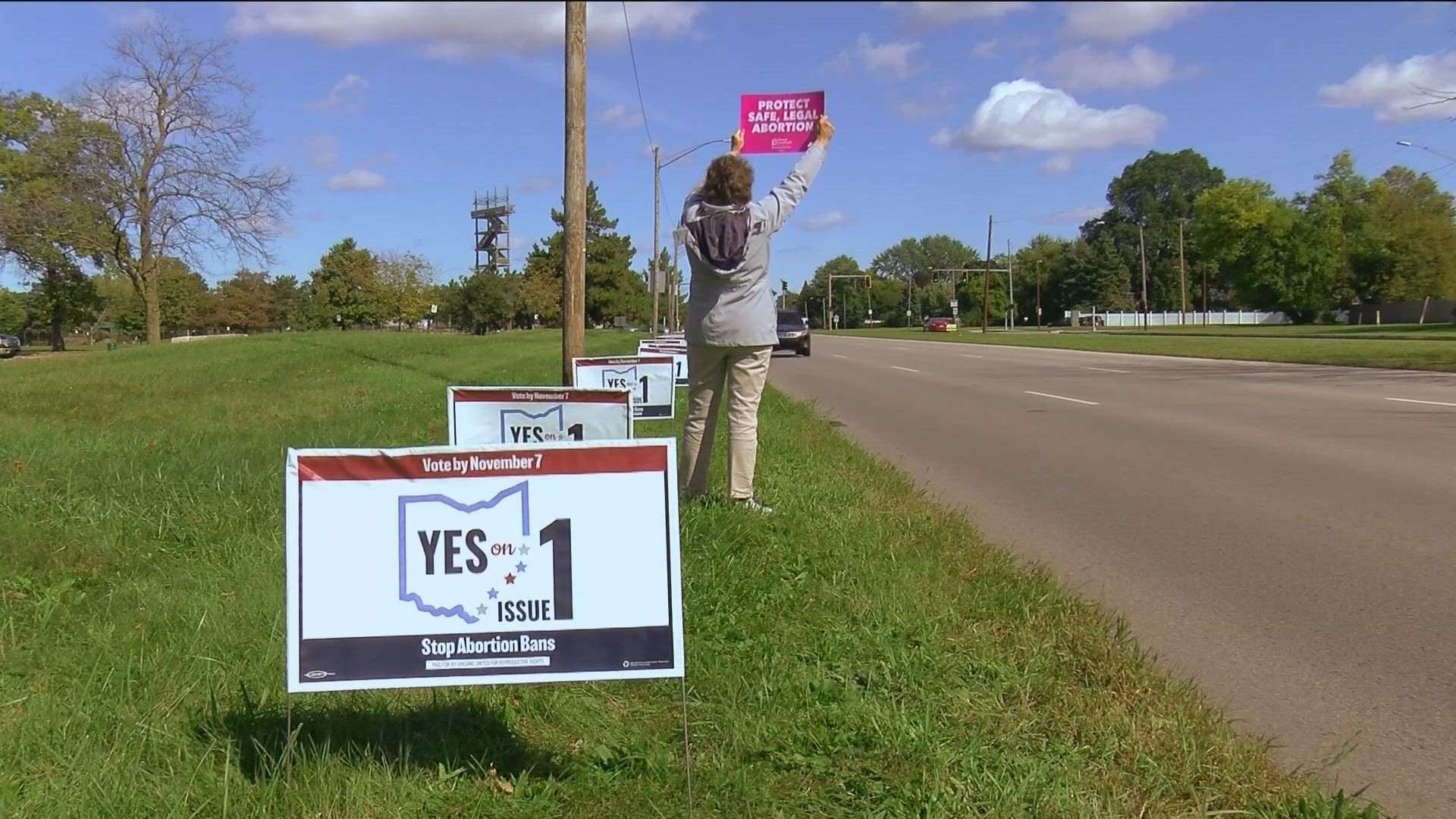OHIO, USA — It's no secret there are plenty of mixed opinions on the issue of abortion. Ohio voters will have to make a decision come Nov. 7.
Issue 1 "would establish an individual right to one's own reproductive medical treatment, including but not limited to abortion," according to ballot language.
There are plenty who will check yes, "we believe that government shouldn't have a place in these personal and private decisions," said Diamond Crumby, the director of communication for Planned Parenthood Advocates of Ohio.
There will also be many who will vote no, "this is an issue at the end of the day that is too extreme, it's so radical, even pro-choice Ohioans are voting no," said Mike Gonidakis, the president of Ohio Right to Life.
Those who plan to approve Issue 1 believe abortion access should be a right.
"Issue 1, we've already seen what happens when the abortion ban is in place, for 82 days last year people had to flee the state even when they were on the brink of losing their own health, they had to get healthcare elsewhere," Crumby said, referencing when Roe V. Wade was overturned in June 2022 and it was left to states to decide when or if a woman could get an abortion.
For those against Issue 1, Gonidakis said there are a lot of flaws with the proposed amendment.
"What Issue 1 does would literally enshrine abortion rights up to and through the ninth month of pregnancy in our state constitution, which Ohioans don't agree with," Gonidakis said.
So what does the ballot actually say? According to the Ohio Secretary of State, "the proposed amendment would:
- Establish in the Constitution of the State of Ohio an individual right to one’s own reproductive medical treatment, including but not limited to abortion;
- Create legal protections for any person or entity that assists a person with receiving reproductive medical treatment, including but not limited to abortion;
- Prohibit the State from directly or indirectly burdening, penalizing, or prohibiting abortion before an unborn child is determined to be viable, unless the State demonstrates that it is using the least restrictive means;
- Grant a pregnant woman’s treating physician the authority to determine, on a case-by-case basis, whether an unborn child is viable;
- Only allow the State to prohibit an abortion after an unborn child is determined by a pregnant woman’s treating physician to be viable and only if the physician does not consider the abortion necessary to protect the pregnant woman’s life or health; and
- Always allow an unborn child to be aborted at any stage of pregnancy, regardless of viability if, in the treating physician’s determination, the abortion is necessary to protect the pregnant woman's life or health."
The first bullet point has some fearing the amendment could give teens and kids the right to make their own reproductive decisions, since it says "individual" with no age limit or identification.
"If it passed, it would take away parental consent in our state constitution and that's a bridge too far for even pro-choice Ohioans," Gonidakis said. "We know countless pro-choice Ohioans that say, 'hey, look, I disagree with the Ohio Right to Life on the issue of life but I also want to be able to as a parent have a say in my son and daughter's life and that is why I'm voting no on Issue 1.'"
But Crumby said that is simply just not what it states.
"Nothing in Issue 1 will change the current laws when it comes to parental consent," she said.
When WTOL 11 was looking into the amendment, it seemed like the wording was vague with a lot of gray areas and it turns out that could be on purpose.
"They want it to be as broad as possible so there can't be any way to retract on the rights that are given," Toledo-based attorney Scott Ciolek said.
He added that even if Issue 1 passes, every facility can be different when it comes to treating those who might be underage or asking for certain treatments.
"Each hospital will have their own procedures they control themselves because the constitution just governs what the state can do to restrict your rights," Ciolek said.
No matter the wording, the votes will likely be close. A poll from Baldwin Wallace University shows that 58% of Ohioans are voting in favor of Issue 1.
Daniel Ortiz, the field director for Ohio Physicians for Reproductive Rights, agreed.
"We are on the right side of this issue," Ortiz said. "A majority of Ohioans agreed with us and our stance here,"
However, Gov. Mike DeWine said more Ohioans oppose the amendment.
"I just think the majority of Ohioans think that abortion should not be allowed," he said. "Abortion on demand should not be allowed."
DeWine added that Issue 1 is just too liberal for Ohio.
"It would make Ohio one of the most liberal open states," he said. "It would make us in the came category, as let's say, California. And that's just not really where we are in Ohio."
If Issue 1 is passed, Governor DeWine's heartbeat bill stuck in the courts would be blocked. Currently, abortions are only legal up to 22 weeks of pregnancy.

